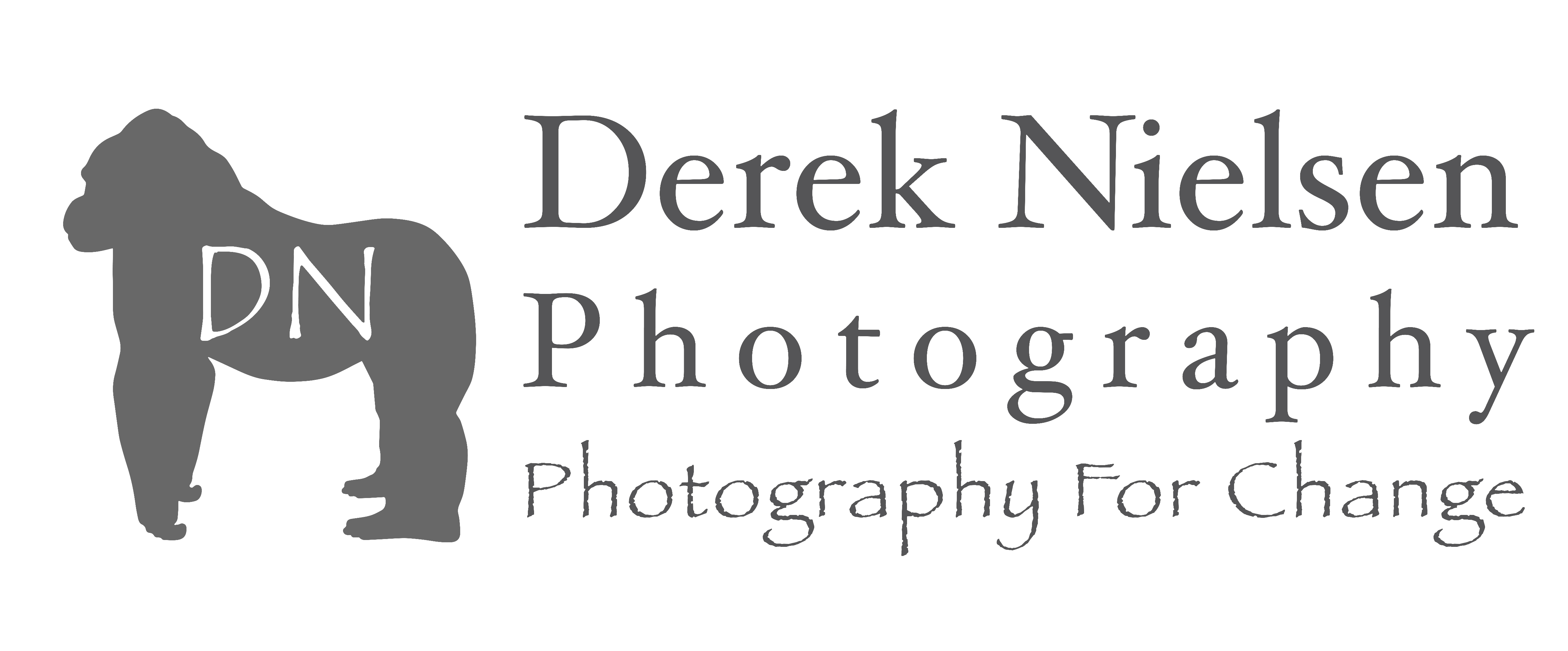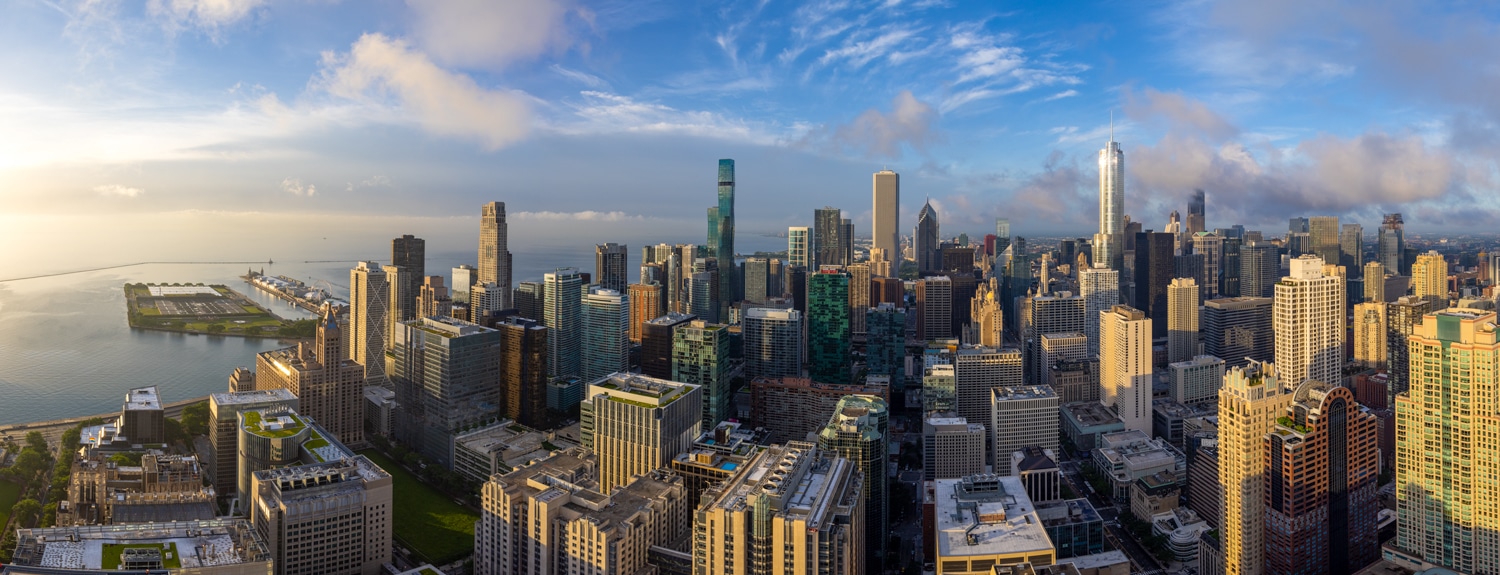
Chicago is an incredible city for photography. The city draws millions of people with its gorgeous lakefront, world-class architecture, delicious food, family-friendly riverwalk, and large parks. What makes this city so special for photographers is its character. Chicago photography begins around these locations, but they are just a start.
When To Visit Chicago?
Chicago is a four-season city. Unlike other four-season cities, Chicago experiences these in one day. I’m only partly kidding. Chicago does every season to extremes.
Winter
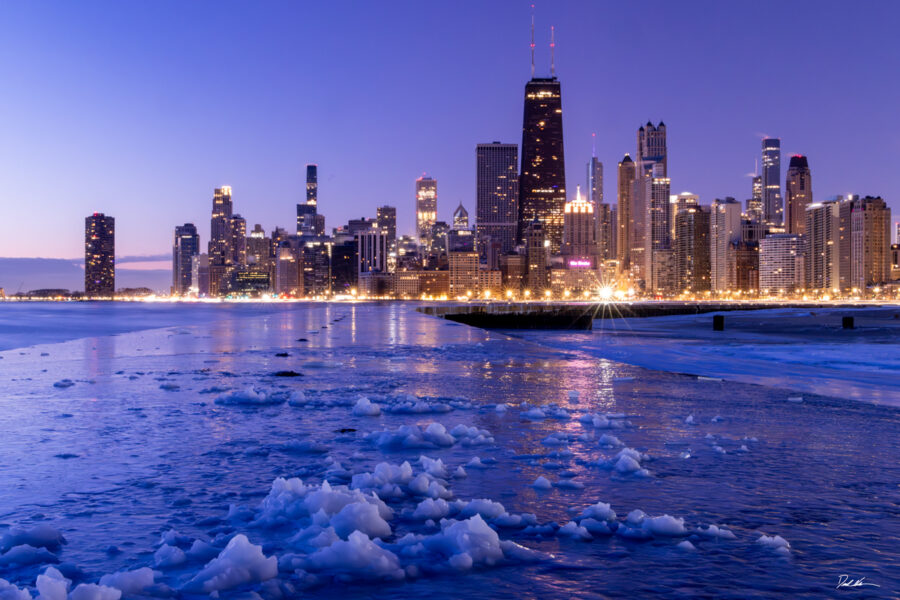
During winter, Chicago can be one of the coldest places on earth. I experienced -54 Fahrenheit. This extreme temperature was during a rare polar vortex, but it can happen. Winter brings an impressive, beautiful ice display called “pancakes” that form along with certain shoreline parts as the water bounces these edge-raised discs against one another. Compositionally, they are a ton of fun to play with. Chicago is home to one of the best Christmas markets in the world. The city light displays are the perfect backdrop for charming winter scenes. You may even catch the “Santa L” if you’re lucky as it makes its way around the city.
Spring
Spring is where Michigan Avenue comes alive. After a long, brutal winter, flower boxes that line the street and others that divide Michigan Avenue explode with tulips. The spread of colors is incredible. The fresh, new green leaves glow across the avenues and parks. Unless you are dying to see the city dye the river green, which is pretty sweet, March is a terrible month to visit Chicago. Think cold rain.
Summer
If Chicago’s summers lasted more than four months a year, Chicago would be one of the most populated cities in the United States. Summer in Chicago makes dealing with the brutal winters worth it. It can get brutally hot, but the beaches and rivers help. In summer, North Avenue Beach gets going with thousands of beachgoers playing sand volleyball, swimming in the cool fresh water, and sunbathing.
Fall
Chicago’s tree-filled parks turn into fireworks shows during fall. Pull out your favorite hoodie, grab some mittens, and a warm cup of hot chocolate. In September, a perfect way to spend a Sunday is to stroll Millennium Park through Grant Park and end on Museum Campus for a Bears game. Unless you are here for Thanksgiving or early Christmas shopping, avoid traveling to Chicago in November. More cold rain.
1. Millennium Park
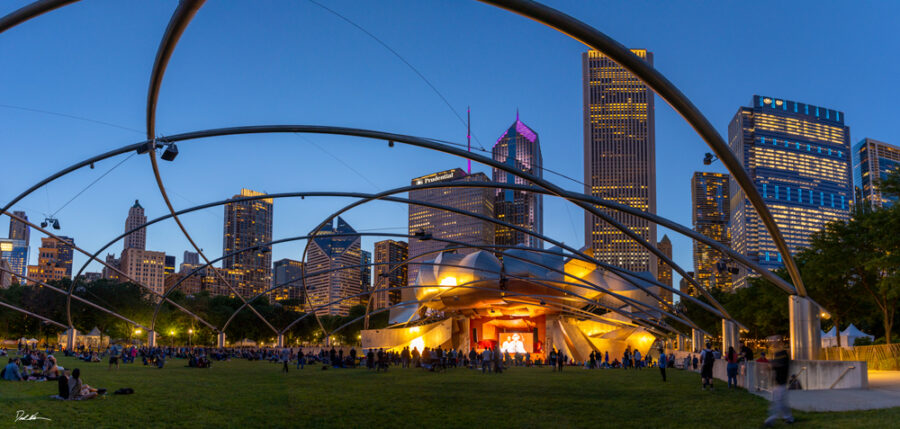
Opened in 2004, Millennium Park has quickly become a famous Chicago landmark. The park is between Michigan Avenue, Randolph Street, Monroe Drive, and Columbus Drive. An estimated 25 million visitors come to Millennium Park every year. Conveniently located near many of Chicago’s top hotels, Millennium Park is easy to walk to from downtown. The park exceeded its original budget by almost three times, costing taxpayers and private donors about $475 million to build. As a local Chicagoan, I love how the park came out.
Jay Pritzker Pavilion
The impressive architecture and design highlight the exquisite bandshell designs by famous architect Frank Gehry. Summer is particularly a treat in Millennium Park due to the multiple music festivals, summer concerts, and Grant Park Symphony performances. Jay Pritzker Pavilion is open even during non-event hours, allowing tourists to lay on the lawn looking through the cage-like design of the shell above for an interesting perspective of Chicago.
Crown Fountain
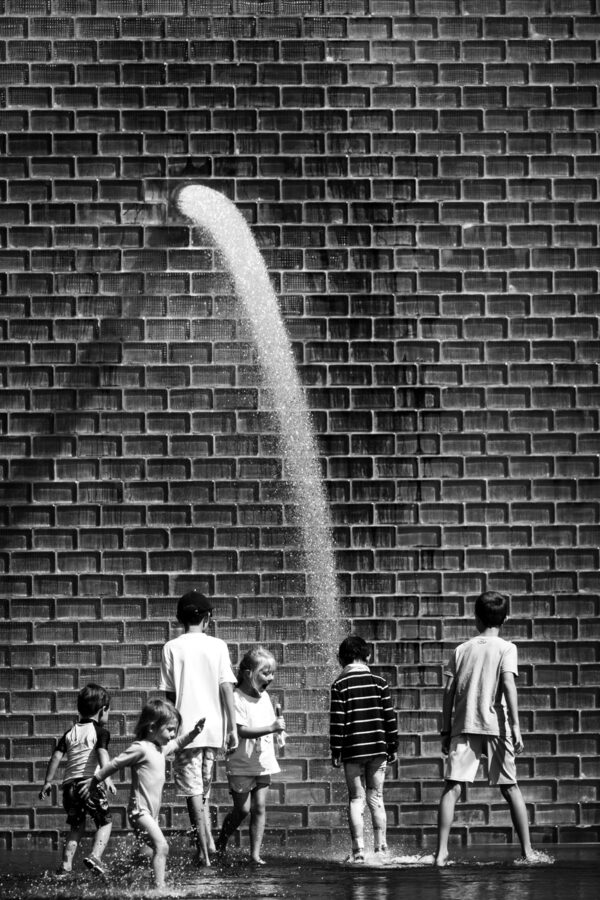
A feature that will surely bring families flocking to the park on a hot day is the Crown Fountain. This interactive piece of public art has two massive 50-foot tall glass block towers at each end emerging from a granite reflecting pool. During the warmer months, each tower acts as a spouting waterfall from above with a port on the front where digitally projected faces pretend to spout water onto willing patrons. Photographers love setting up shop here, catching the frozen motion of water hitting the crowds, or using a neutral density filter to create smooth movement across the scene.
Lurie Gardens
Located south of the bandshell, The Lurie Gardens are a quiet place to get away from the chaos of the city. Designed by GGN (Gustafson Guthrie Nichol), Piet Oudolf, and Robert Israel, the garden will fill into two distinct sections. One is a shaded area representing Chicago’s history with tall trees and shade-loving plants. The other is a light section describing Chicago’s future filled with sun-loving plants that do well in direct hot sunlight.
BP Pedestrian Bridge
Snaking across Columbus Drive, this metallic ribbon unites Millennium Park with Maggie Daily Park. Designed again by Frank Gehry, the pedestrian bridge is more than just a bridge; it is an added feature of the park. The shimmery metallic wrap along the length of the bridge is a compositional playground for photographers.
2. Buckingham Fountain
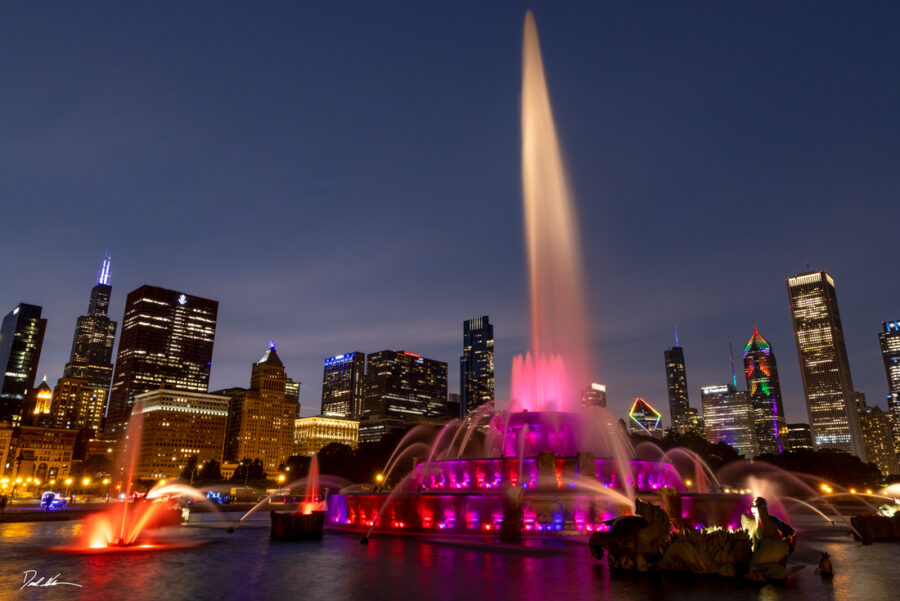
One of the largest fountains in the world, Buckingham Fountain, was donated to the city in 1927 by philanthropist Kate Buckingham. Located between Columbus Drive and Lake Shore Drive in Grant Park, the fountain is open from mid-April to mid-October. Every hour at the top of the hour, visitors watch a fantastic water show lasting 20 minutes. I recommend bringing a tripod and a few neutral-density filters to create long exposure shots. The colorful lights and flowing water make for some pretty incredible Chicago photography shots.
3. Museum Campus
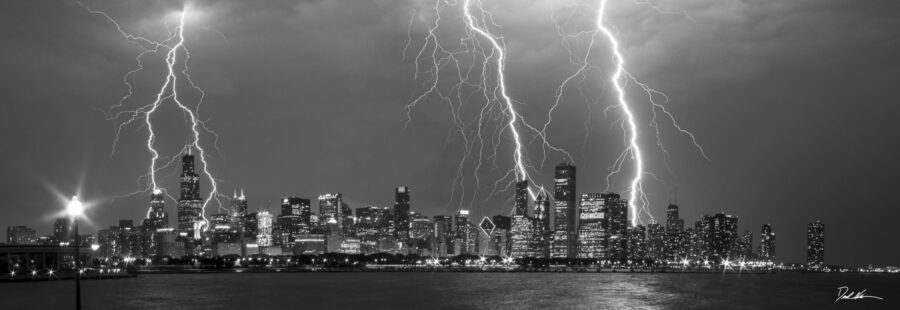
(Limited edition luxury fine art print of 100 – Great Chicago Strom – Derek Nielsen Photography)
Rounding out Chicago’s beautiful lakefront to the south sits the Museum Campus. Home to three of Chicago’s top institutions, Field Museum, Shedd Aquarium, and Planetarium. Museum Campus has one of the most breathtaking views of the city skyline along the drive out to the Planetarium.
Field Museum
On the outside, the Field Museum’s impressive architectural designs date back to the late 1800s, as it was built for the 1893 World’s Columbian Exhibition. The museum displays a staggering array of natural history, from ancient Egyptian artifacts to some of the world’s most enormous complete dinosaur skeletons. On average, 2 million visitors come to the Field Museum each year. What is on display inside the museum is only a tiny fraction of the extensive collection of specimens. The Field Museum is an active research institution with working laboratories and scientists. For photographers, the view from atop the northern steps looking over Grant Park is an excellent spot for sunrise and sunset shots of the city’s skyline.
Shedd Aquarium
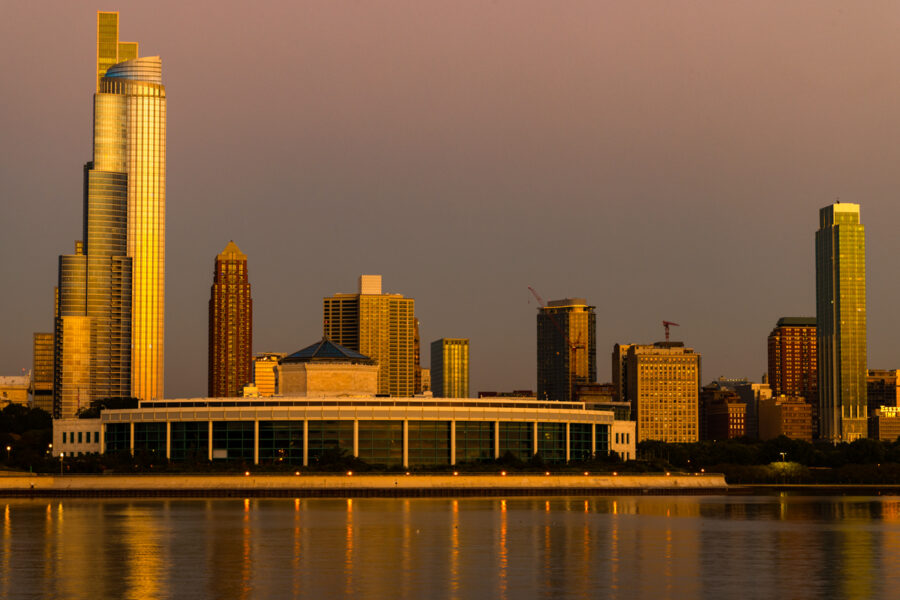
Chicago’s largest indoor aquarium was built in 1930 and is now home to an impressive 32,000-plus species. The aquarium runs right into Lake Michigan, giving an infinity-like feel to the oceanarium portion of the museum. Inside, the museum has three significant sections, a public aquarium, a wild reef, and an oceanarium. Photography can be challenging inside the museum, with most low-light areas. However, it can be rewarding if you get creative.
Planetarium
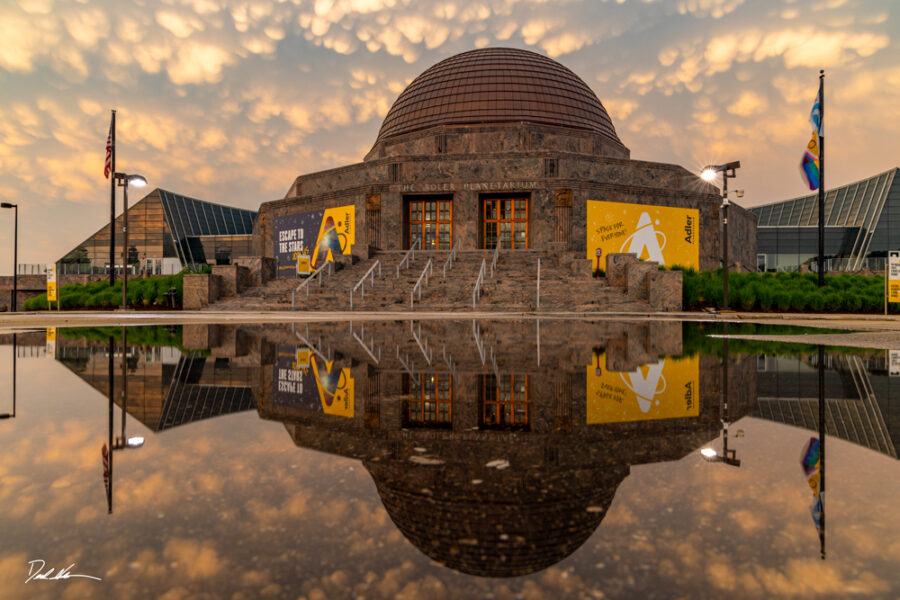
Also opened in 1930, the Adler Planetarium was the first of its kind in the United States. Designed by architect Ernest A. Grunsfeld Jr., the building was designated a historical landmark in 1987. Today, the observatory hosts historical artifacts from various space exploration missions and acts as a working laboratory and event space. Equally as impressive as what is on the inside, the outside has the most inclusive view of Chicago’s skyline. Visitors can view Chicago’s fireworks display at Navy Pier every Wednesday and Saturday all summer from its shores.
4. Willis (Sears) Tower
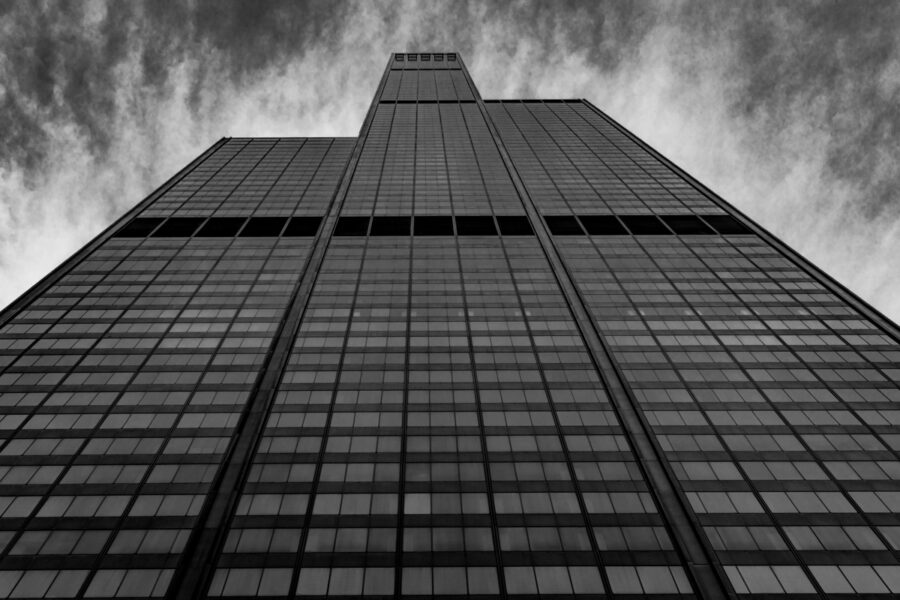
As a native Chicagoan who grew up with the name Sears Tower, it feels unnatural to call the building Willis Tower. Willis Group Holdings, a London-based insurance broker, negotiated the naming rights for no additional costs. For years, the Willis Tower was the tallest building in the world. In 1974, the tower opened its Skydeck for visitors to take in the views, but in 2009, the building added four glass boxes to take visitors’ breaths away. This feature allows visitors to walk into these glass boxes with a straight view down all 103 floors to the street. These boxes can be fantastic for creative photographers to have some fun.
5. Historic Chicago Water Tower
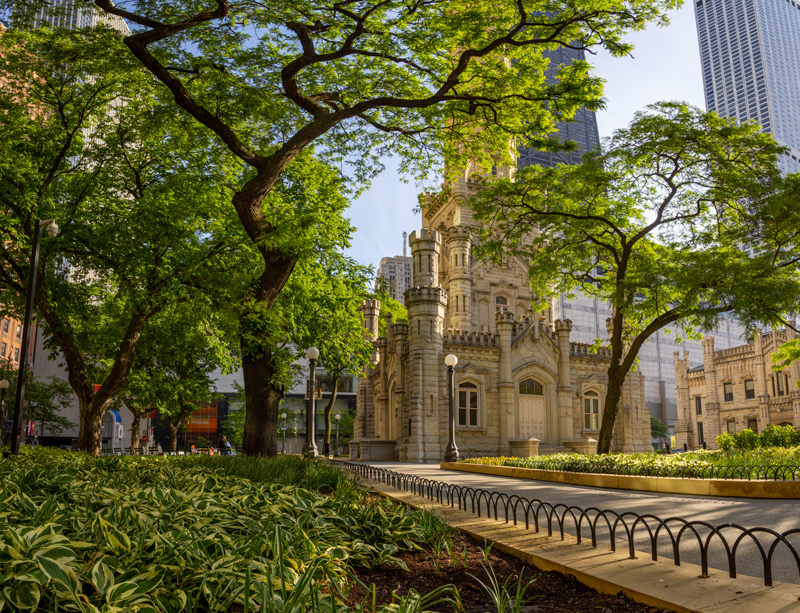
This location is one of my favorite places to take a time out in Chicago. Park benches line the area around the park, which has become the historic Chicago Water Tower grounds and makes it the perfect place to enjoy a morning coffee. People-watching is fantastic as tourists and locals intermix along this stretch of Michigan Avenue. Prolific architect William Boyington built the picturesque structure housing the standpipe to regulate water pressure from the drawn-in lake water. The water tower and the pumping station across Michigan Avenue were the only public buildings in the burn zone from the great Chicago fire to survive. After the 1871 fire that destroyed most of Chicago, the water tower became a symbol of a city determined to rebuild from the ashes. Any decent Chicago photography calendar or portfolio should include the iconic historic Chicago Water Tower.
6. Chicago Theatre
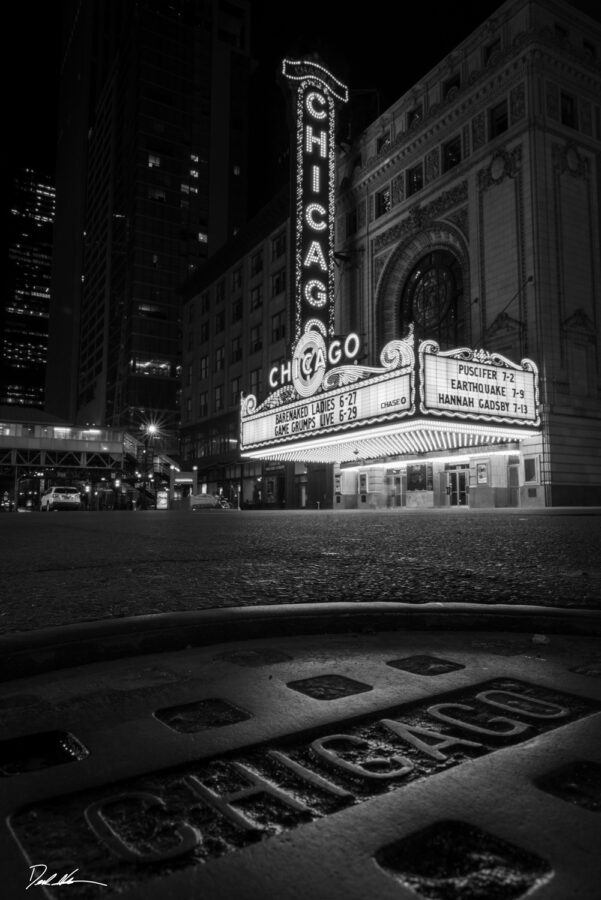
(Limited Edition Luxury Fine Art Print of 50 – Great Sreet – Derek Nielsen Photography)
No trip to Chicago as a tourist or photographer is complete without a trip to see the Chicago sign on the Chicago Theatre. The building is one of Chicago’s most photographed facades for a reason. It’s gorgeous. Built in 1921, you can almost feel the history of the characters who roamed the isles just by looking at its exterior. State Street is only a shadow of itself today, but the area in and around the theatre is still bustling with people. Photography of this historic spot makes it difficult to make your images stand out from the crowd, but superb shots are there if you get creative and bring in surrounding elements.
7. The Bean (aka Cloud Gate)
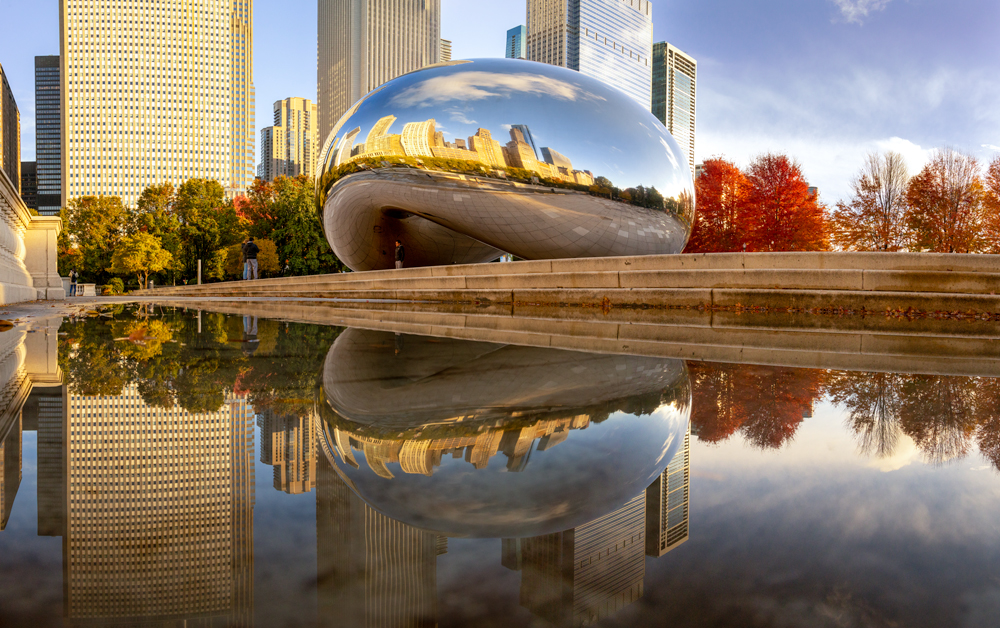
Although the bean is in Millieum Park, I thought it deserved its own section. Year-round, no attraction in the park draws as many tourists as the bean. Designed by British artist Anish Kapoor, the bean is made of tightly fitted welds virtually unseeable by the naked eye. The bean reflects distorted images of the city’s surroundings from all angles. It is best to photograph the bean on days with puffy clouds or during sunrise or sunset to give the shot less negative space.
8. Navy Pier
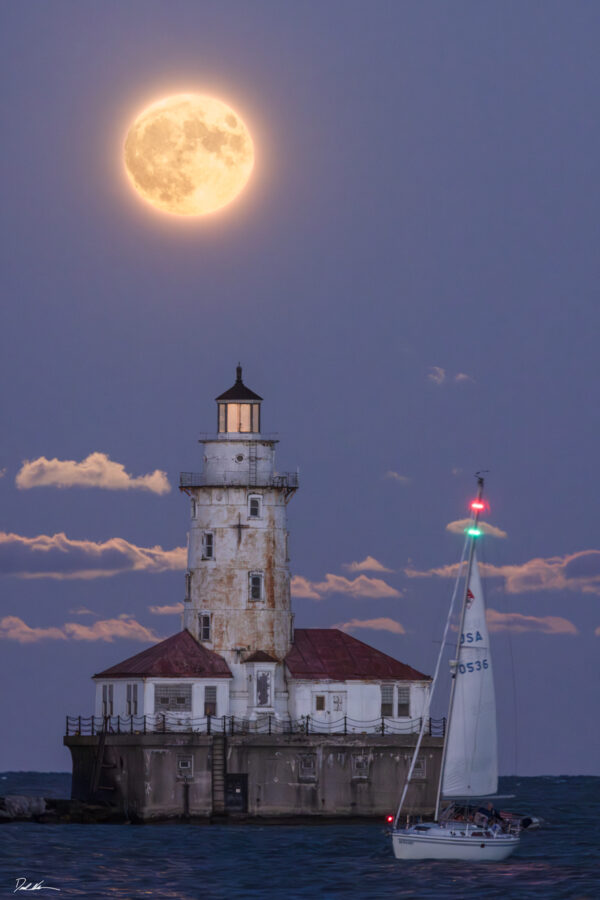
Located at the end of Grand Avenue in the city center, this 3300-foot pier extends out into Lake Michigan from Lake Shore Drive along the East branch of the Chicago River. Built in 1916 as a working pier, Navy Pier never developed into a tourist attraction until the early 2000s, when a major renovation took place, adding an IMax theatre, a new Ferris Wheel, and shopping.
Navy Pier hosts the city’s fireworks display every Wednesday and Saturday night during the summer months. Perfect for that first date or an easy place to bring, the family Navy Pier has something for everyone. Sightseeing cruises depart from the pier, giving tourists an excellent view of Chicago’s skyline from the lake. Each year Expo Chicago holds its annual exposition of contemporary and modern art in Navy Pier’s Festival Hall. The above photo was taken at the end of Navy Pier during the supermoon rise of 2023 over the Burnham Harbour lighthouse.
9. Calder’s Flamingo
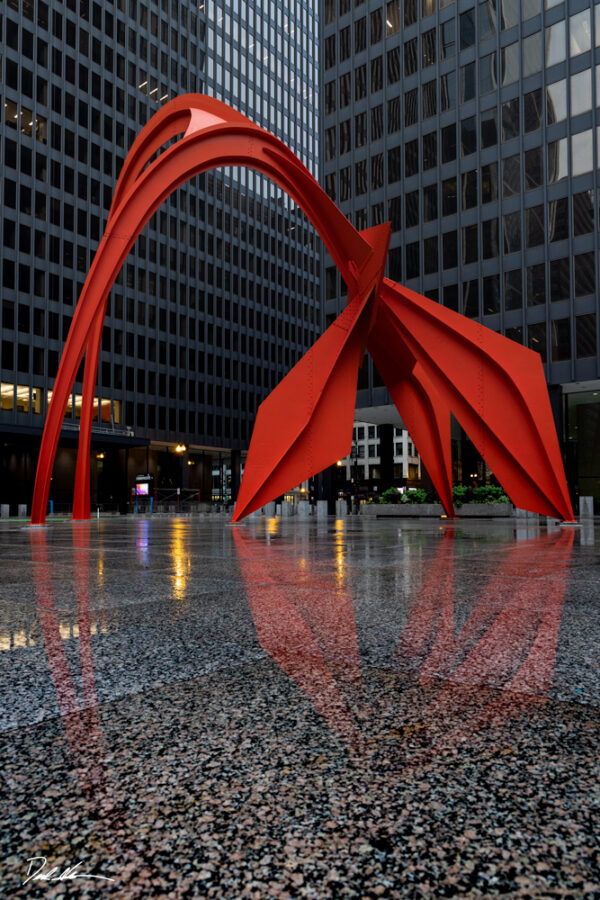
In the heart of Chicago’s business district sits a bright orange monster-like structure glowing out of place from its cage-like surroundings. Created by American artist Alexander Calder the 53ft tall sculpture arches and flows against the modern buildings it calls neighbors. The plaza is home to one of Chicago’s post headquarters. Basically, everything around the sculpture is dark and lifeless except the Flamingo. This contrast makes photographing the Flamingo even more fun. The plaza surface acts as a perfect reflecting pool for mirror images on rainy days.
10. Chicago Riverwalk
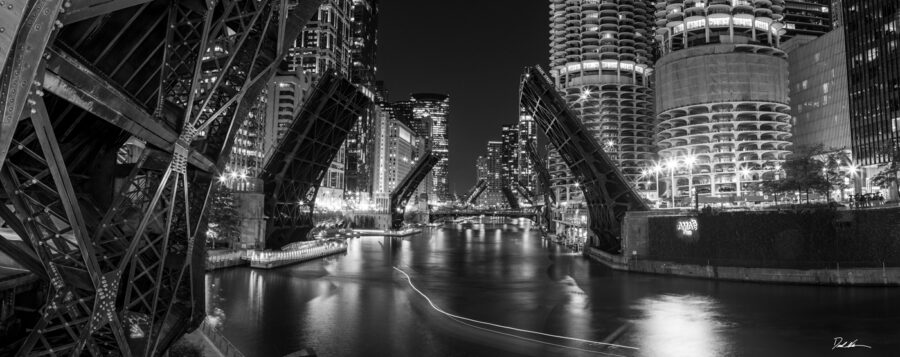
(Limited Edition Luxury Fine Art Print of 100 – Bridges Up – Derek Nielsen Photography)
The Chicago River is a prominent feature of Chicago’s downtown landscape. Due to an incredible marvel of modern engineering (1887), the Chicago River now flows toward the Mississippi River instead of into Lake Michigan. This decision was to help protect the city’s water supply as it sluggishly flowed into Lake Michigan, carrying all kinds of pollutants with it. The point where the North, South, and East branches intersect is called Wolf Point. At this intersection, in 1860, Abraham Lincoln was nominated as the candidate for president, later to become the 16th president of the United States.
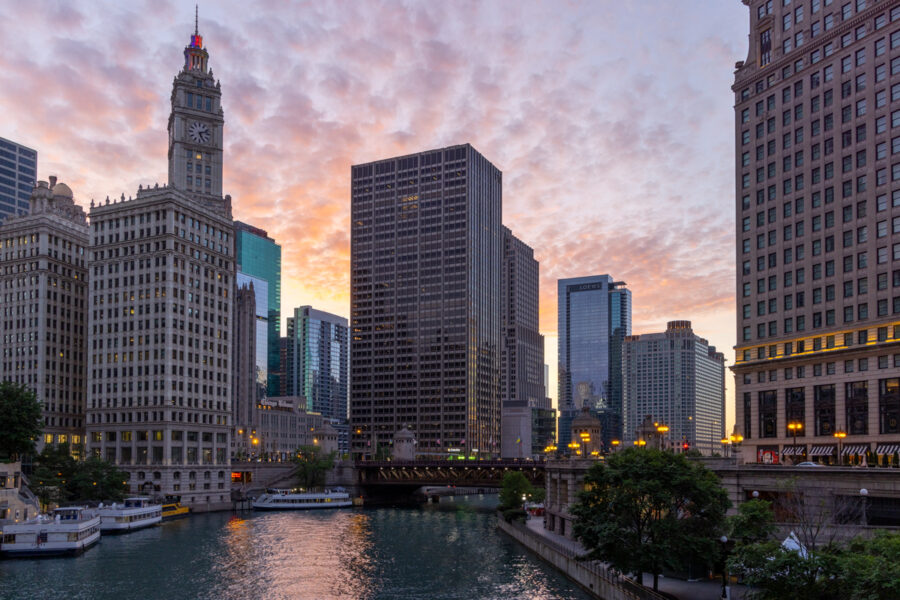
What once was a grimy, unattractive feature of the city is now a top tourist attraction filled with outdoor restaurants, seating, boat landings, a running path, public art, and entertainment. The river walk runs from Lake Street to the west to Lake Michigan to the east along the south side of the river. It has become a favorite place to relax with my dog in the early morning light, watching the world go by.
During the turmoil of the summer of 2021 after George Floyd’s murder, the city raised the bridges to separate the city, limiting traffic as angry mobs rioted and looted residents and businesses. A popular place to take a little time out, sip a glass of great wine, and immerse yourself in Chicago is the City Winery, located along the riverwalk between Dearborn and State Street. Some of the best Chicago photography shots are taken along the new riverwalk. The industrial iron bridges between the new and old skyscrapers make for a composition playground.
11. John Hancock Observatory
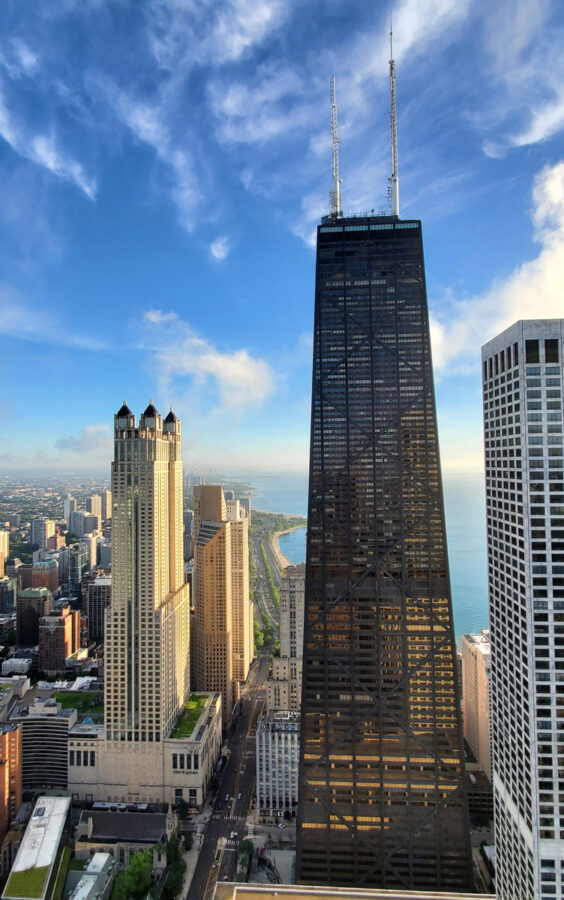
For many years, the John Hancock Building was in the top three of Chicago’s tallest buildings. As of the time of this article, it is currently sitting at number five. The building is actively looking for new naming rights per the John Hancock company’s request. For an out-of-towner or local looking to impress guests, the 95th-floor restaurant and lounge are an exceptional place to have a cocktail or take in the city views for dinner. 360 Chicago Observatory, located on the 94th floor, lets viewers take pictures high above the city.
In spring and summer, the plaza surrounding the building is full of beautiful flower displays, which makes for a nice foreground for images of the skyscraper. Inside the south lobby is one of my favorite public art installations globally. “Lucent” sits in the middle of the south entrance and comprises 3,115 lightbulbs emanating from a center sphere. Designer/artist Wolfgang Buttress based this number on the number of stars a person can see with the naked eye.
12. Wrigley Field
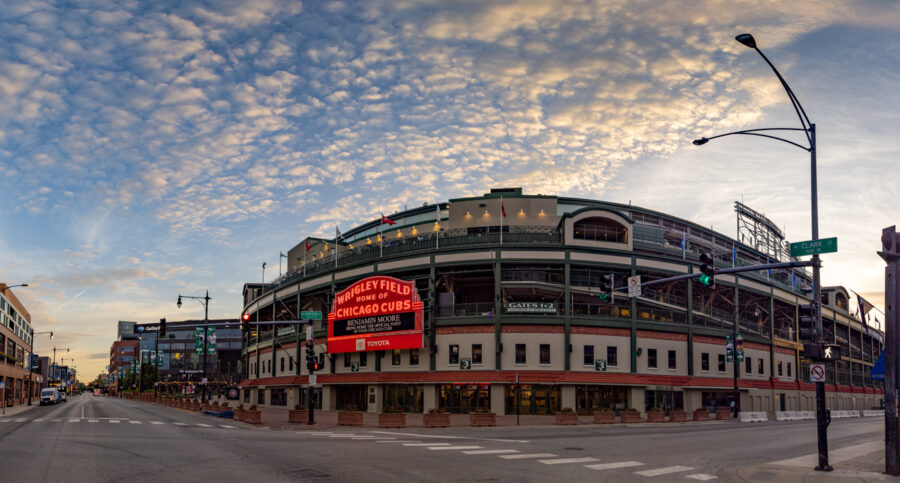
As much as it kills me to say as a White Sox fan, Wrigley Field is a pretty awesome building to take pictures of. Built in 1914, the Chicago Cubs have been playing home games there since 1916. The stadium is out of date, has blindspots for viewing the field in some places, the bathrooms are a disaster, ivy grows on the outfield wall, and yes, that is precisely what makes this historical landmark charming. It doesn’t need to change. Located in the heart of a dense residential area, Wrigley Field is surrounded by unique rooftop bars, giving partons a view down onto the field. Now also home to rock concerts, the area around Wrigley Field “Wrigleyville” is an excellent place to pre-party before the big shows.
13. Chicago Board Of Trade
More important than the building itself is the view of it looking down LaSalle Street towards the south. This iconic scene has been featured in movies like Batman, Ferris Bueller’s Day Off, and Transformers and used in Chicago photography. It makes for a great cityscape because the canyon-like walls of the surrounding skyscrapers lead to a dead-end heading south. The art deco Board Of Trade building brings even more character into the scene as it towers above the street with its antique clock a third of the way up the tower.
14. North Avenue Beach

Any time of year is excellent to visit North Avenue Beach. Ice forms along its shore in winter, creating great opportunities for interesting compositions. Please be careful on the pier, though, as people drown in the freezing lake every year, getting swept in by the waves. The space between the pier and the beach is home to the famous winter “pancakes” formed by gently colliding ice. Walking along the pier to the south toward Oak Street Beach, there are several locations for unique photos of the city skyline. This beach is full of bikinis, board shorts, and flying volleyballs during summer.
North Avenue Beach can compete with any beach in the world. The Chicago Air and Water Show takes place along the coast every year, so plan in advance if you are looking to visit. Castaways is an excellent place to grab a cool drink while taking in the summer rays.
15. Lincoln Park
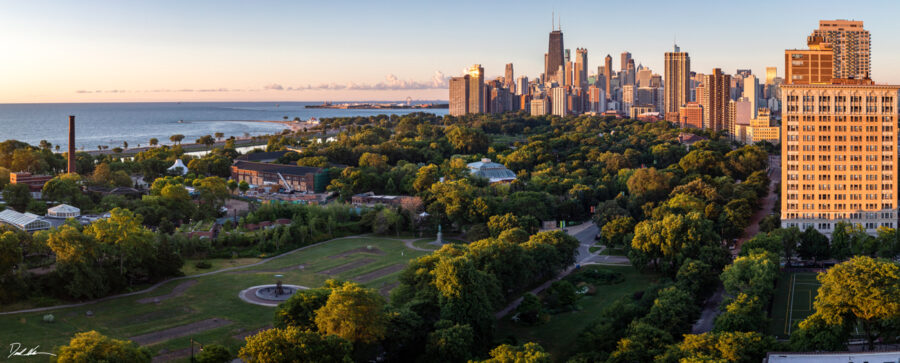
One of Chicago’s more desired residential neighborhoods, Lincoln Park, has a lot to offer. This neighborhood on Chicago’s north side has everything going on, from high-end dining to rooftop bars, great shopping, and entertainment. Lincoln Park Zoo sits in the Far East, an open-to-the-public free zoo with nature walks around two different lagoons. The southern view offers beautiful reflections of the skyline.

A new addition to the park is a honeycomb structure used for an outdoor event space. This structure can make for some great, unique compositions and very instagramable shots. The world-famous comedy club Second City, underground blues venue Kingston Mines, Peggy Norbert Nature Museum, the Lincoln Park Conservatory, the Chicago History Museum, and Steppenwolf Theatre all call Lincoln Park home.
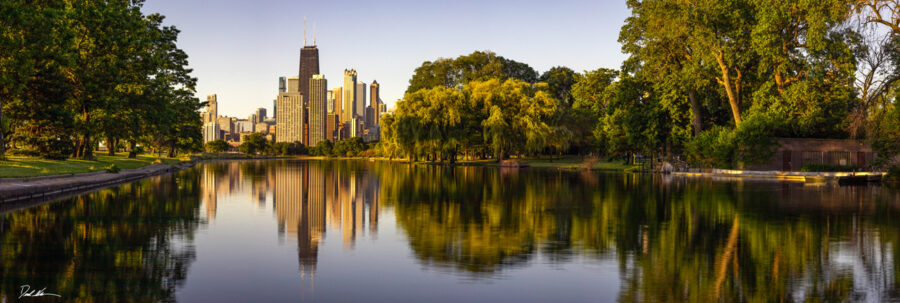
For an awesome perspective of the city, walk down Fullerton toward Lake Shore Drive. Cross the bridge and look to the south. One of my favorite places to do Chicago photography is over the lagoon between Lincoln Park Zoo and Lake Shore Drive.
16. The Art Institute of Chicago
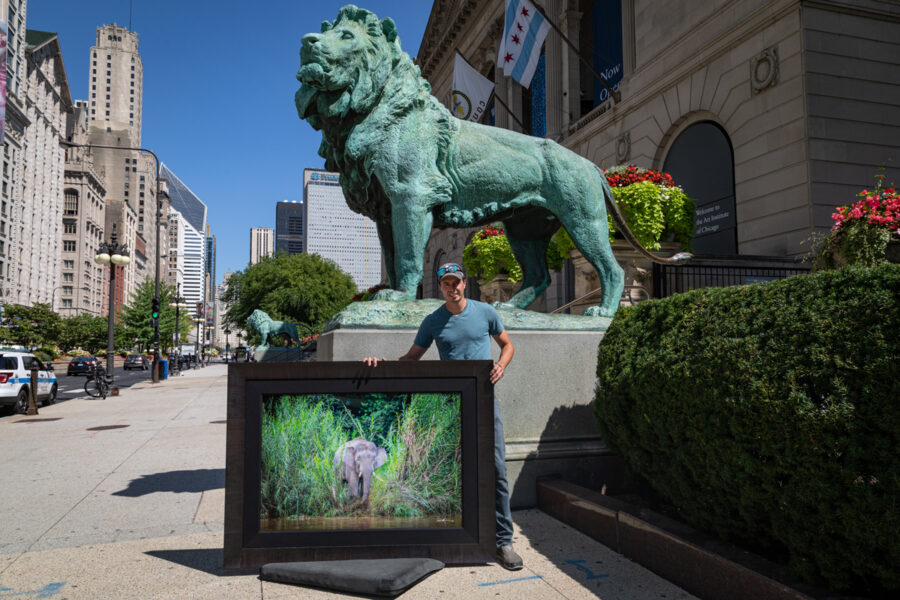
Built in 1879, the Art Institute of Chicago is one of the oldest art museums in the world. Visited by the Queen of England and Prince Philip in 1959, the museum halls greet everything from royals to the general public. Vincent van Gogh, Georges Seurat, Diego Rivera, Richard Hunt, Pablo Picasso, and Claude Monet are famous artists whose works are on display. I highly encourage anyone to spend time there for its art collection is amongst the best in the world. The iconic lion statues are flanking each side of the entrance, making an excellent foreground for pictures along the famous Michigan Avenue.
17. Cindy’s Rooftop Bar
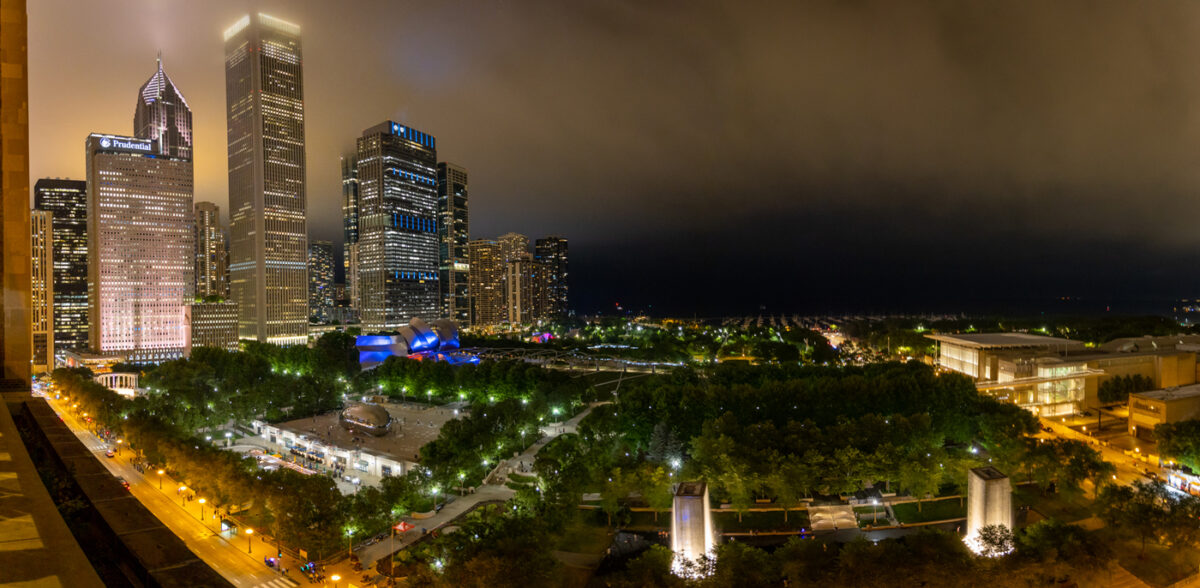
Located directly across from Millennium Park, Cindy’s Rooftop Bar has a magnificent view over Grant Park, the lakefront, and the surrounding buildings. As the sun sets, enjoying a nightcap on the balcony is an unforgettable experience as you watch the city lights come on. Book your reservations ahead because its popularity makes it a difficult destination to get in.
18. LondonHouse Rooftop Bar
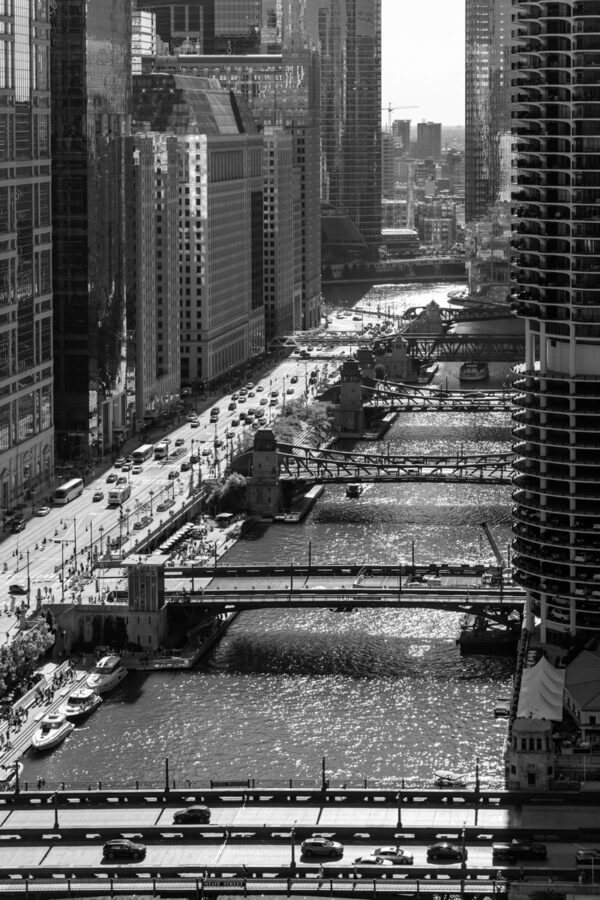
This bar is the most popular trendy, and difficult bar to get reservations at in all of Chicago. It is ideally located on the river’s south side, right at the bend, giving LondonHouse a perfect view down the Chicago River to the west. I highly recommend taking the architectural boat tour before visiting to better understand your surroundings when you have a bird’s eye view of Chicago’s incredible architecture on the rooftop. One important thing to note is that LondonHouse does not allow DSLRs or any professional cameras on their rooftop. Call ahead for special permission. It is kind of a shame because it is one of the absolute best spots for Chicago photography.
19. The L Train S Curve
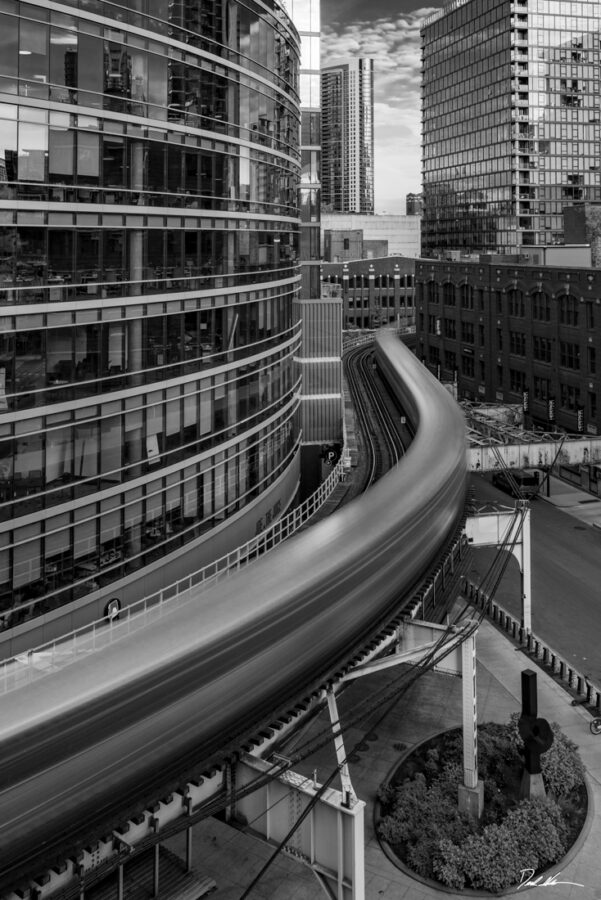
There are a few things more iconic in Chicago than the L. This elevated train system is the fourth largest in the United States, covering just over 224 miles of track. Movies like The Blues Brothers, Planes Trains and Automobiles, The Fugitive, and Ferris Buehler’s Day Off have featured the “L”. The system conveniently connects both airports to the city’s downtown. For the famous S curve, head to River North. Near the Merchandise Mart, a parking garage gives viewers an elevated view down onto the tracks. I highly recommend bringing a tripod to create motion blur of the train and an ND filter if shooting in bright light. Please be careful of passing cars in the garage.
20. Michigan Avenue “The Magnificent Mile”
Loaded with shopping, Chicago’s “Magnificent Mile” is still one of the city’s top tourist attractions. The pandemic indeed hurt retail along the famous stretch, but this year the renowned shopping district of Chicago has made a resurgence. Rolex, Starbucks, Breitling, and Vacheron Constantin opened new stores recently. This stretch of Michigan Avenue between the river and Oak Street is excellent for Chicago photography during Spring and winter.
In Spring, the street is lined on both sides with rainbows of tulips in the most incredible display of color.
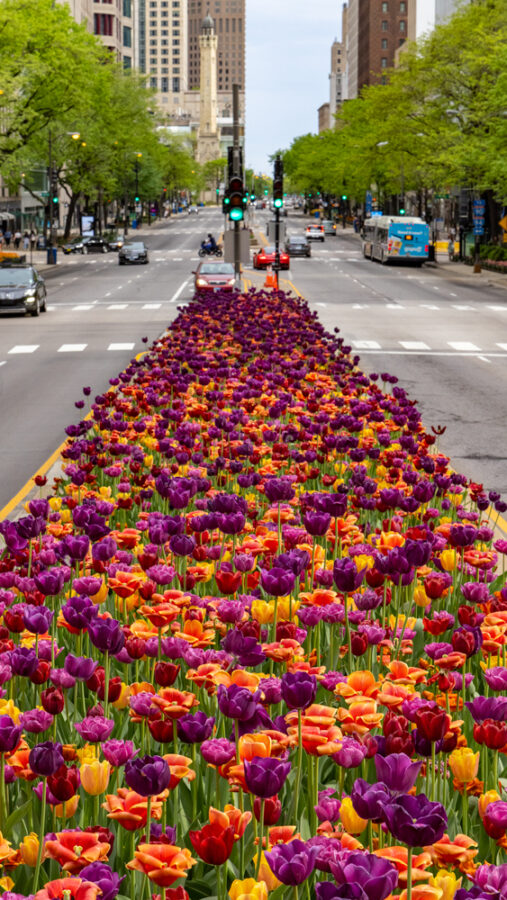
Winter brings a romantic light show as the city decorates the “Magnificent Mile,” with bright white lights setting the mood for holiday shoppers. Despite the cold, winter is one of the best seasons for Chicago photography.
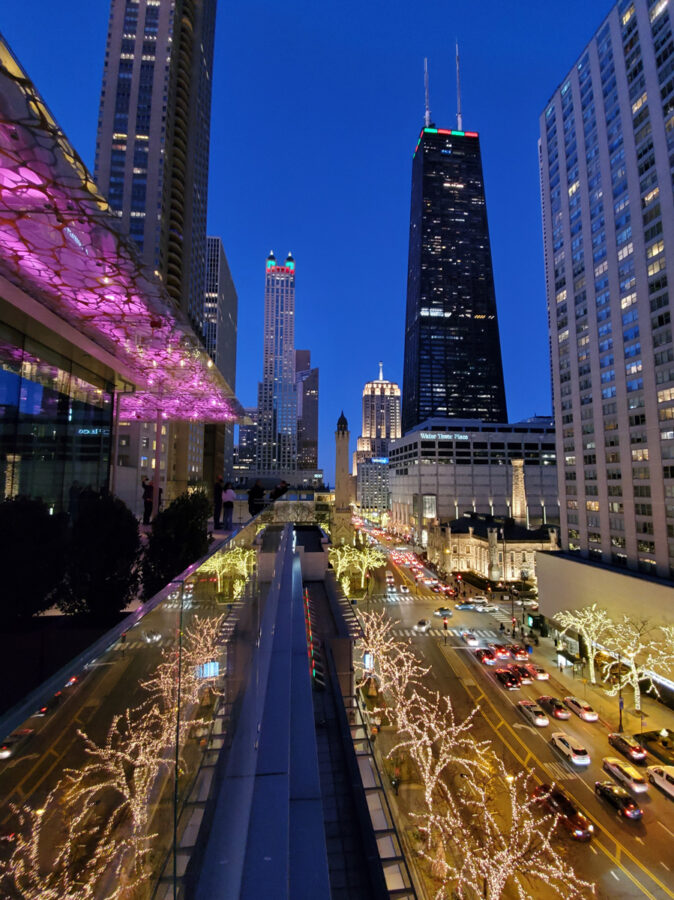
21. Wolf Point
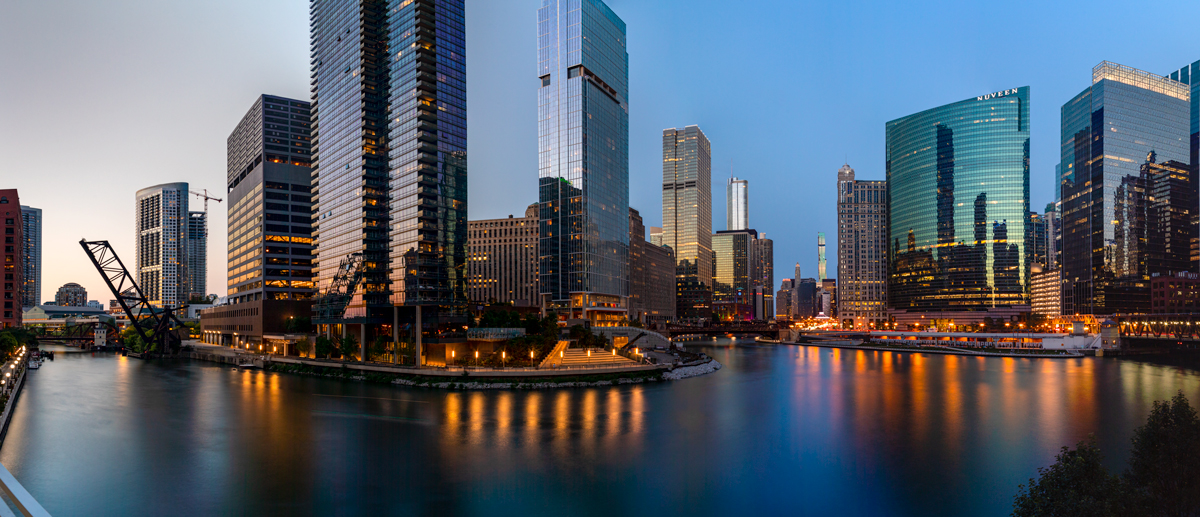
Located where the north and south branches of the Chicago River split into two separate flowing rivers away from Lake Michigan. Each of the three sides of the convergence gives the viewer a very different look. Modern skyscrapers decorate the skyline while boats parade up and down all summer. The photo above was taken from the west bank of Wolf Point during sunset.
22. Humboldt Park Lagoon
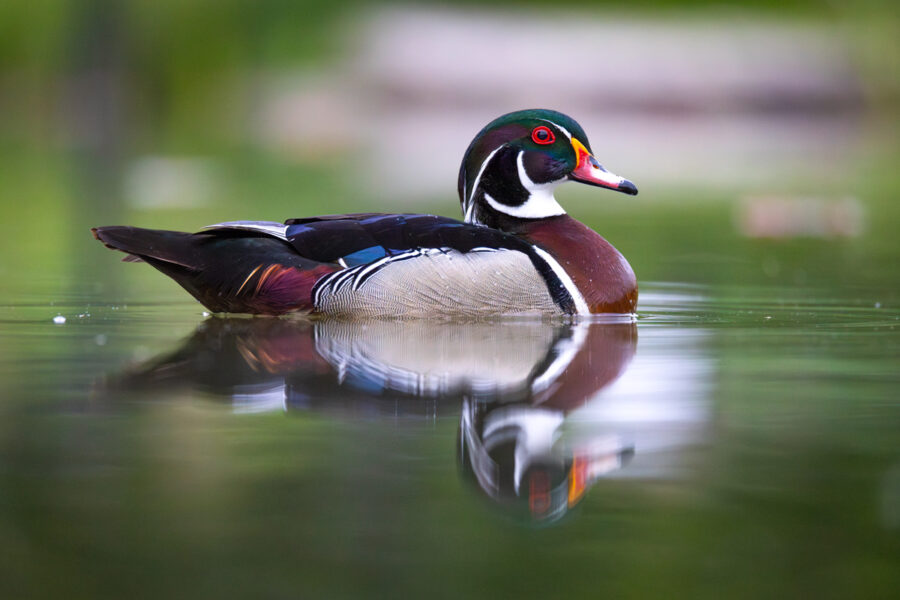
Located on the west side of Chicago just west of California Avenue, Humboldt Park is one of Chicago’s largest parks. Humboldt Park has a bad reputation for being dangerous, but I have never had any issues with it. With any major city always use common sense and keep an eye on your surroundings. The lagoon hosts many year-round wildlife visitors. My favorite subjects to photograph are the resident wood ducks and, in the springtime, all the baby geese.
Chicago Photography – Falling Back In Love With My City
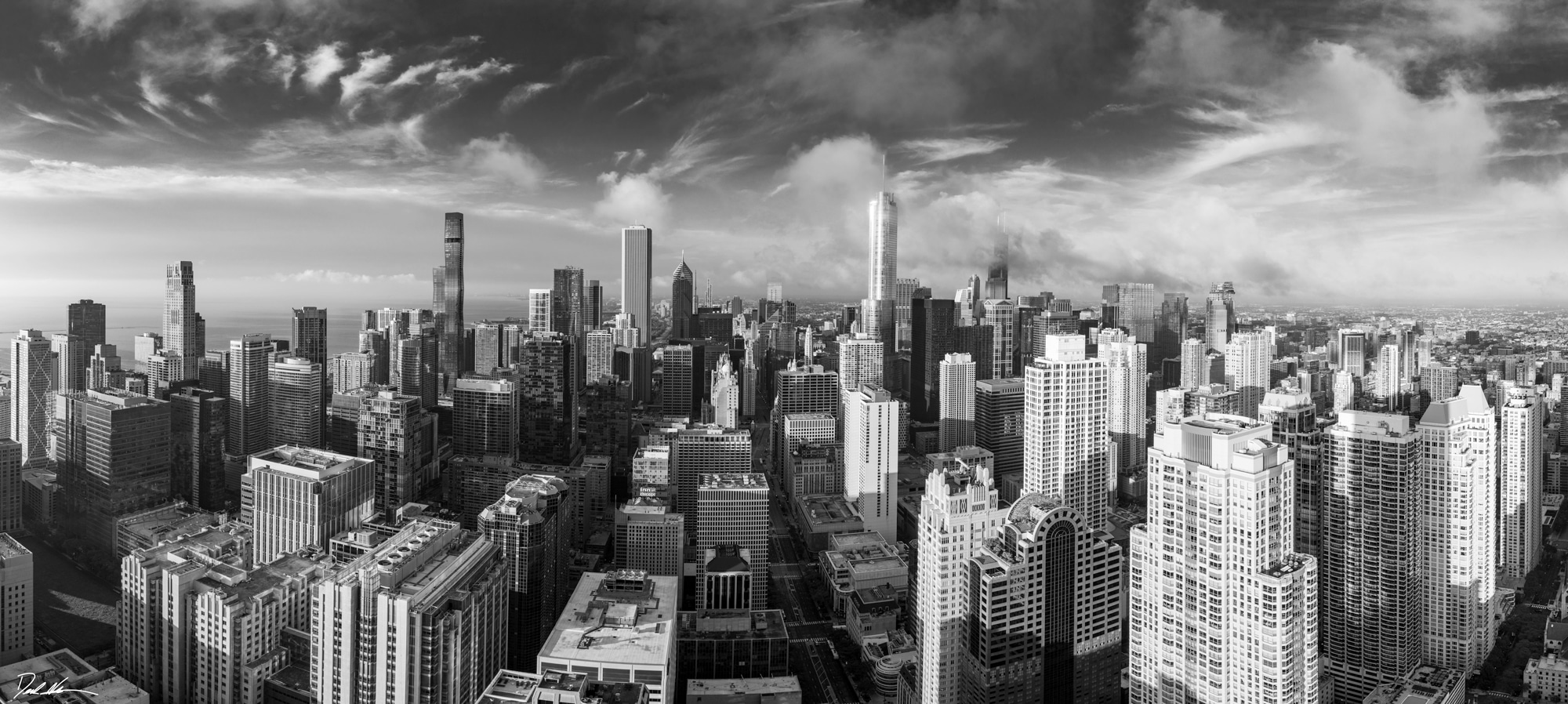
(Limited Edition Luxury Fine Art Print of 50 – 161 Black – Derek Nielsen Photography)
I first picked up a camera working a terrible job in college as a way to keep myself entertained during my lunch breaks. Since then, I have traveled the world seeking adventure while finding ways to capture beautiful images to help support conservation through my print sales. Before taking on this article, I realized I had more images of various cities worldwide than my own city. I love Chicago. It breaks my heart that Chicago has gained a reputation for being a dangerous city riddled with gun violence and gangs, but it is just not the case. Chicago has the same problems most significant cities in the United States face.
As I made my way around to these different locations, compiling my list of the 20 best places to do Chicago photography, I was reminded of just how beautiful Chicago really is. Chicago has long been a sanctuary for outsiders or people seeking refuge. As I watched the sunrise over Lake Michigan for the featured image of this article, I couldn’t help but think about how incredible the people of Chicago are.
The people make this city one of the best cities in the world. For an hour, I watched light dance across the architecture-rich city in amazement. There are few cities quite like Chicago. The sports teams will come and go, and the buildings will continue to climb higher, but the people of Chicago will always welcome those in need. Visit for yourself. Capture your own Chicago photography and fall in love with this great city, just as I have again and again.
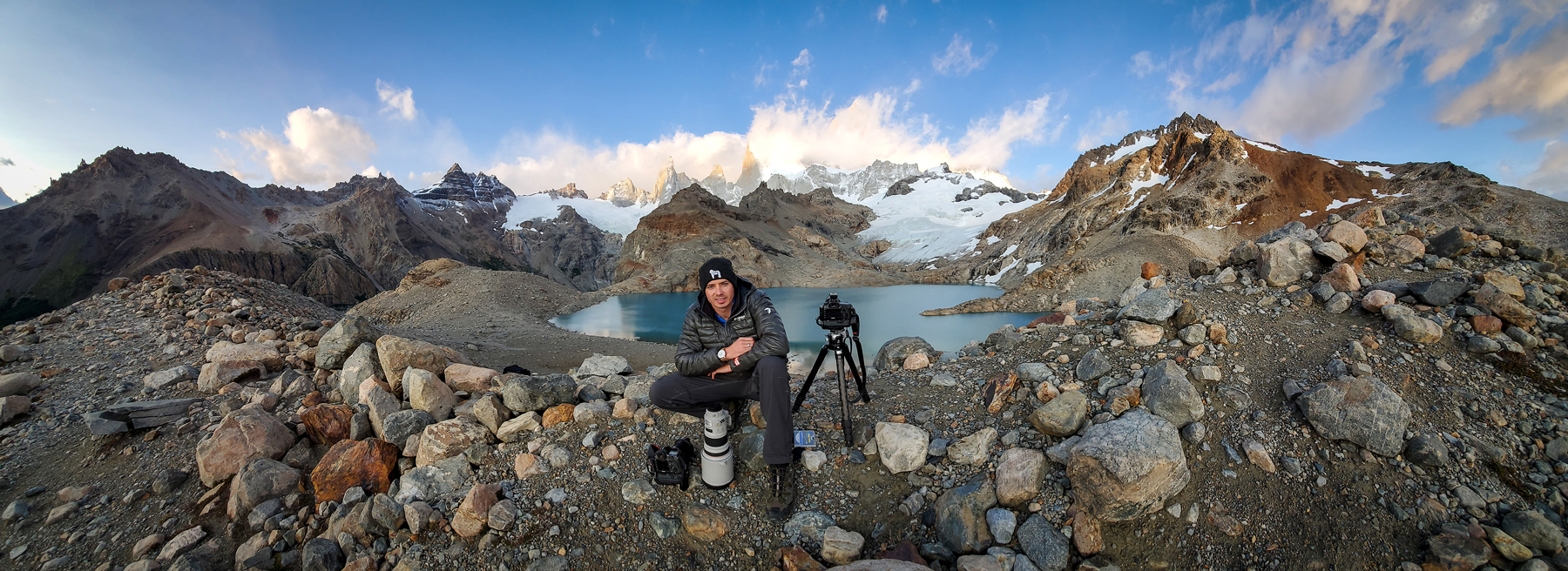
Hello! I'm Derek.
DEREK NIELSEN PHOTOGRAPHY RAISES AWARENESS ABOUT THE GLOBAL NEED FOR CONSERVATION THROUGH PHOTOGRAPHY AND DONATES UP TO 15% OF ALL SALES BACK TO ENVIRONMENTAL ORGANIZATIONS AROUND THE WORLD.
